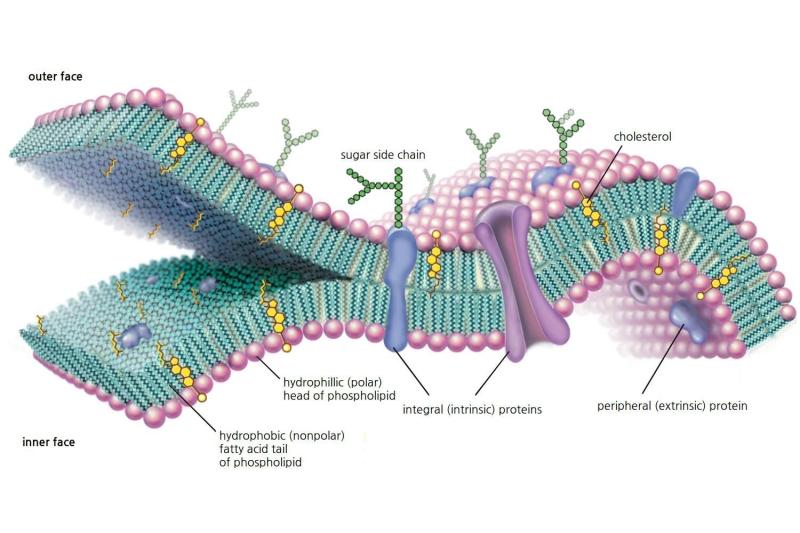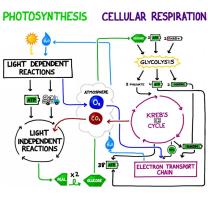The cell membrane, also known as the plasma membrane, serves several crucial functions that are essential for the proper functioning of a cell. The four primary functions of the cell membrane include:
1. Semi-Permeability and Selective Barrier:
- The cell membrane acts as a semi-permeable barrier that separates the cell's internal environment from the external surroundings. It controls the movement of substances in and out of the cell. This selective permeability allows certain molecules to pass through while restricting others based on size, charge, or solubility.
2. Maintaining Cell Homeostasis:
- The membrane helps maintain the internal environment of the cell by regulating the concentrations of ions, nutrients, and other molecules. It achieves this through active transport, passive diffusion, and facilitated diffusion processes, ensuring that the cell's internal conditions remain optimal for cellular processes.
3. Cellular Communication and Signaling:
- Proteins embedded within the cell membrane act as receptors, channels, or transporters, facilitating cell-to-cell communication and signaling. These proteins play crucial roles in receiving external signals, transmitting messages into the cell, and coordinating cellular responses to stimuli, such as hormones or neurotransmitters.
4. Cell Structure and Shape:
- The cell membrane provides structural support to the cell and helps determine its shape. It encloses and maintains the integrity of cellular organelles and structures, contributing to the overall stability and functionality of the cell.
These functions collectively allow the cell membrane to control the exchange of materials, communicate with its environment, maintain internal stability, and provide structural support, enabling cells to carry out essential processes necessary for life.
1. Role of the Cell Membrane in Cellular Communication
The cell membrane, also known as the plasma membrane, is a thin, selectively permeable barrier that surrounds every cell. It plays a crucial role in cellular communication by controlling what enters and exits the cell. This selective permeability allows the cell to maintain a stable internal environment and respond to external signals.
The cell membrane contains specialized proteins called receptors that act as signal receptors. These receptors bind to specific molecules, called ligands, that are present in the extracellular environment. When a ligand binds to its receptor, it triggers a signaling cascade that relays the message inside the cell. This signaling process allows cells to communicate with each other and coordinate their activities.
2. Regulation of Substance Movement Across the Cell Membrane
The cell membrane regulates the movement of substances across the membrane through various mechanisms:
Simple diffusion: Simple diffusion allows small, non-polar molecules to move freely across the membrane down their concentration gradient, from a region of high concentration to a region of low concentration.
Facilitated diffusion: Facilitated diffusion involves the movement of substances across the membrane with the help of transport proteins. These proteins act as channels or carriers that facilitate the passage of specific molecules.
Active transport: Active transport requires energy input to move substances across the membrane against their concentration gradient. This process is essential for the uptake of nutrients, ions, and other molecules that are essential for the cell's functioning.
Endocytosis: Endocytosis involves the engulfing of extracellular material by the cell membrane. This process occurs through various mechanisms, such as phagocytosis, pinocytosis, and receptor-mediated endocytosis.
Exocytosis: Exocytosis is the reverse of endocytosis and involves the release of substances from the cell to the extracellular environment. This process is important for releasing hormones, enzymes, and other molecules that play various roles in the cell's interactions with its surroundings.
3. Significance of the Cell Membrane in Maintaining Cell Structure and Integrity
The cell membrane plays a critical role in maintaining cell structure and integrity. It provides a stable and flexible boundary that separates the intracellular environment from the extracellular environment, protecting the cell from external harm and maintaining the cell's internal organization.
The cell membrane's structural components, such as phospholipids and proteins, contribute to its strength and flexibility. Phospholipids form a bilayer structure that provides a barrier to the movement of substances, while proteins embedded in the membrane perform various functions, including transport, signaling, and structural support.
The cell membrane also acts as an anchor for the cytoskeleton, a network of protein filaments that provides the cell with its shape and support. The cytoskeleton interacts with the cell membrane, contributing to the cell's overall structural integrity.
In summary, the cell membrane plays a multifaceted role in cellular function, serving as a selective barrier, a communication hub, and a structural component that maintains cellular integrity. Its ability to regulate substance movement, facilitate signaling, and provide structural support is essential for the survival and proper functioning of cells.













